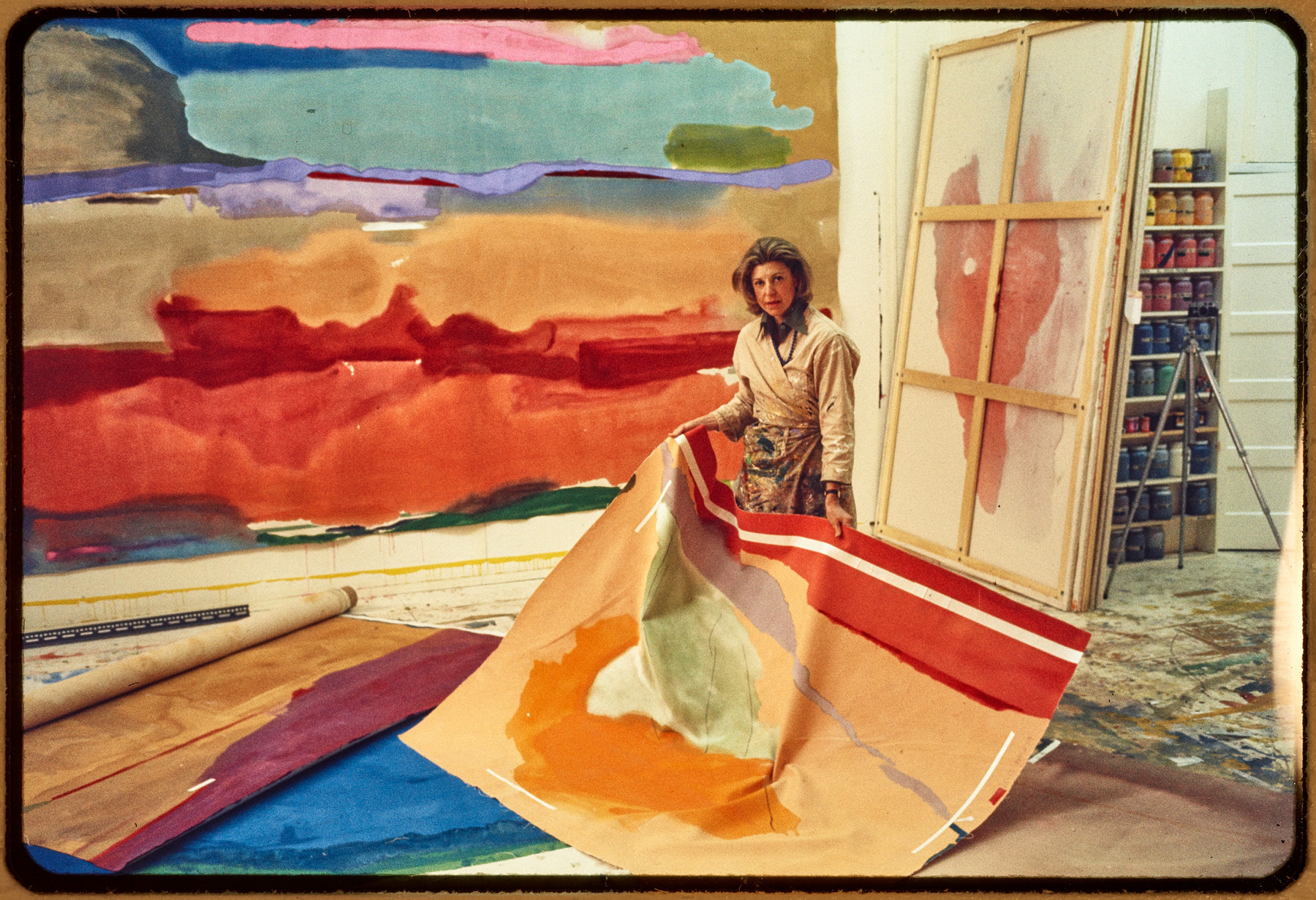Helen Frankenthaler
In the spring of 2026, the Kunstmuseum Basel showcases the oeuvre of Helen Frankenthaler (1928–2011), a pioneer of abstract painting. More than fifty works illustrate the creative energy of one of the most important artists on the postwar U.S. scene. It is the largest presentation of her art in Europe to date and her first solo exhibition in a museum in Switzerland.
At the young age of twenty-three, Helen Frankenthaler changed the course of the history of painting when she came up with her innovative soak-stain technique: applying diluted paint to unprimed canvases she laid out on the floor, she created compositions of enormous luminosity—often in large formats. She manipulated the paint from all sides, using sponges, scrapers, bristle brushes, and other tools. As a result, the canvas absorbed the paint; support medium and color became one. Although Frankenthaler left plenty of room in the painting process for chance, she retained a finely honed sense of balance and structure. Her works captivate the beholder with the lyrical handling of color and bold compositional choices.
The daughter of an educated and affluent Jewish family in New York City, Frankenthaler studied painting and set up shop in her own studio in Manhattan when she was just twenty. She soon struck up acquaintances with the influential art critic Clement Greenberg and members of the first generation of Abstract Expressionists including Lee Krasner, Barnett Newman, her future husband Robert Motherwell, and Jackson Pollock. Pollock’s treatment of the horizontal canvas inspired her to devise the revolutionary technique that enabled her to hold her ground in a male-dominated environment and emerge as a pioneer of color field painting.
Frankenthaler continually developed and refined her practice throughout her long career. In addition to singular paintings on canvas and paper, she created ceramics, sculptures, wall hangings, and especially prints. She died in Darien, Connecticut, at the age of eighty-three.
The exhibition Helen Frankenthaler presents forty paintings and fifteen works on paper to trace her creative evolution over more than six decades and is the first to shed light on her probing studies in Western art history from the Italian Renaissance to modernism. As a student at Bennington college, she had immersed herself primarily in Pablo Picasso’s Cubism and the pictures of Paul Cezanne, Wassily Kandinsky, Joan Miró, and Henri Matisse. From the 1950s onward, she often found inspiration in older paintings that she saw in museums in New York. During extended tours of Europe, in particular, she visited countless museums and admired painters like Titian, Peter Paul Rubens, and Claude Monet. By integrating paintings to which Frankenthaler makes explicit reference, the exhibition frames a novel perspective on her oeuvre.

